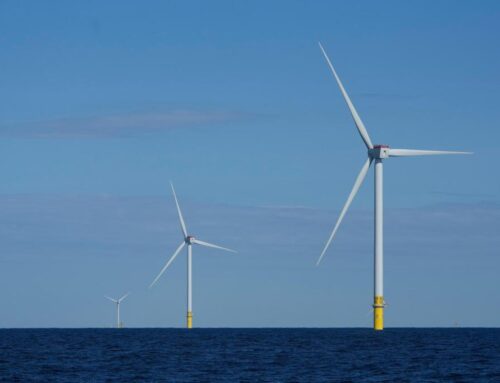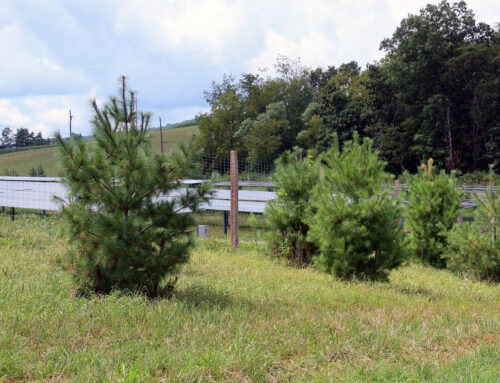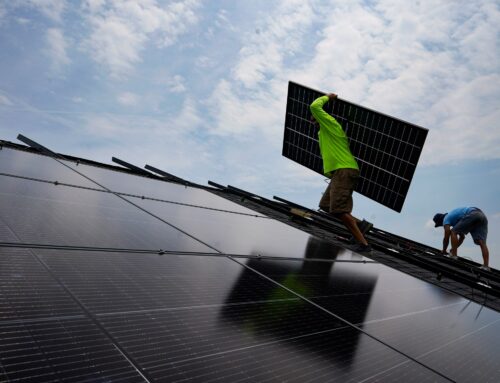Weather-Proofing Your Clean Energy Targets
November 17, 2025
The intense rainy season of 2025 was a double-sided coin: on the one hand, the recovery of dams and reservoirs; on the other, damage to communities and infrastructure. In the power sector, the balance was largely positive: hydropower generation recovered, and electricity demand during the hottest months declined thanks to the cooling effect of rainfall. The result was a drop in electricity prices, along with a higher share of clean energy in Mexico’s generation mix.
However, this year’s abundance does not mark a constant trend. It follows two of the driest and hottest periods Mexico has experienced, confirming that climate change is driving increasingly extreme swings between abundance and scarcity, particularly of water resources.
This raises a key question: How can companies stay on track toward their clean energy targets while also strengthening their resilience in an increasingly unpredictable energy environment? In other words, how can a company’s climate strategy not only reduce emissions but also protect its operations, stability, and costs in a changing climate?
If part of a company’s strategy to reach its clean energy targets depends on renewable resources available in the grid, it is crucial to recognize that such availability will become increasingly variable. The key is not to avoid that variability but to anticipate and manage it strategically; that is, integrating climate as a new factor of both risk and opportunity in the energy business.
This analysis explores two complementary dimensions: how to advance toward clean energy goals in a more uncertain environment, and how to strengthen operational resilience in the face of growing climate and price volatility.
Aligning Energy Goals With Climate Reality
According to Mexico’s system operator (CENACE), accumulated hydroelectric generation as of Oct. 27, 2025, reached 20,503GWh — 30% higher than in the same period in 2024. Hydropower remains relevant to the national system due to its flexibility, as it can respond to grid fluctuations within minutes.
However, its average performance has declined over time. The capacity factor, which measures how often a plant operates at full capacity, fell in the past 15 years, from 34% during the 2010–2014 period, to 27% in the following five years, and finally to 25% in the last five (2020–2024). In other words, with nearly the same installed capacity, hydro plants are producing less electricity.
Hydropower used to be a high contributor to the Mexican grid in 2010, with 14.2% of annual participation. In 2023, its contribution was only 5.9%, one of the causes of clean energy penetration falling to 23.4% in 2024 — the lowest since 2019 — after peaking at 28.6% in 2021.
This is not an isolated trend. Amazon-region countries, highly dependent on hydropower, have also faced reductions in effective generation capacity. In Brazil, for example, hydropower’s share fell from 84% to 55% over the past 15 years. Brazil had a very clear situation: that drop in hydro share was going to be covered by either fossil fuels or some other alternative. Amazingly, around 82% of that drop was offset by new solar and wind capacity, installed at an unprecedented pace. As water availability varies with extreme weather, wind and solar can keep energy prices low, and avoid prolonging a dependency on fossil fuels for another generation.
Shielding Operations Against Energy Volatility
The other critical component is demand. Peak demand — the moment of the year when the system requires the most electricity simultaneously — forces the use of all available generation assets, including the most expensive. In Mexico, these are often diesel-based plants, whose costs can reach up to seven times the market average, while significantly increasing CO₂ emissions.
Under normal conditions, national peak demand grows at around 3% per year. However, 2023, marked by prolonged drought and record temperatures, broke all patterns: peak demand surged by 9.8% year over year, with the increase persisting through 2024. This forced the prolonged use of high-cost plants and raised the power system’s overall emissions.
In contrast, 2025 may see a temporary reduction in peak demand due to extended rainfall and milder temperatures. Nonetheless, the broader trend points to steady demand growth driven by electrification, digitalization, and more frequent heat waves. Also, hydro is usually used in peak hours. With every year of droughts, its contribution to peak hours also reduces.
For industries, this has a direct consequence: the 100 critical hours of the year — those that define capacity market costs — have become significantly more expensive. Adjusting operations or managing demand to avoid those peaks can yield major savings, particularly for energy-intensive sectors such as manufacturing, food processing, or mining.
At Regenerative, we often see that the use of future climate data to project future electricity demand is not yet a common practice. Extreme weather events can cause a shortage on both net-zero target achievements and energy PPAs. There is a crucial need to understand how the national power sector works and how extreme weather conditions can impact its capacity to provide supply reliability.
Business Strategies: From Dependence to Resilience
The cost and availability of energy are no longer explained solely by supply, demand, or regulation — climate has become an equally decisive factor. We can see a clear reflection of this in the past three years in demand behavior. As a result, energy price volatility is now increasingly shaped by weather conditions (apart from the political, geopolitical, and economic factors), which under climate change are becoming more extreme, from the exceptional droughts of 2023–2024 to the unprecedented rains of 2025.
As a result, leading companies are moving from dependence to resilience. On-site generation, whether solar, wind, or hybrid, has emerged as a key tool to ensure energy autonomy and cost stability. When that generation is renewable, the benefit is duplicated: it reduces exposure to market volatility while accelerating progress toward clean energy goals.
Complementary strategies, such as smart demand management and storage, also help with the smoothing of consumption peaks and leverage periods of abundance. Together, these measures align to a new business paradigm where climate resilience and energy efficiency are integrated into a single strategic roadmap.
In summary, investing in renewable capacity, operational flexibility, and climate resilience is no longer just an environmental decision, it is a sound business strategy. The climate will continue to change, and the companies that best anticipate this new reality/context will be the ones that keep their costs stable, their clean targets on track, and their competitive edge over time.
PLADESE
https://www.dof.gob.mx/nota_detalle.php?codigo=5770297&fecha=17/10/2025#gsc.tab=0
Search
RECENT PRESS RELEASES
Related Post




